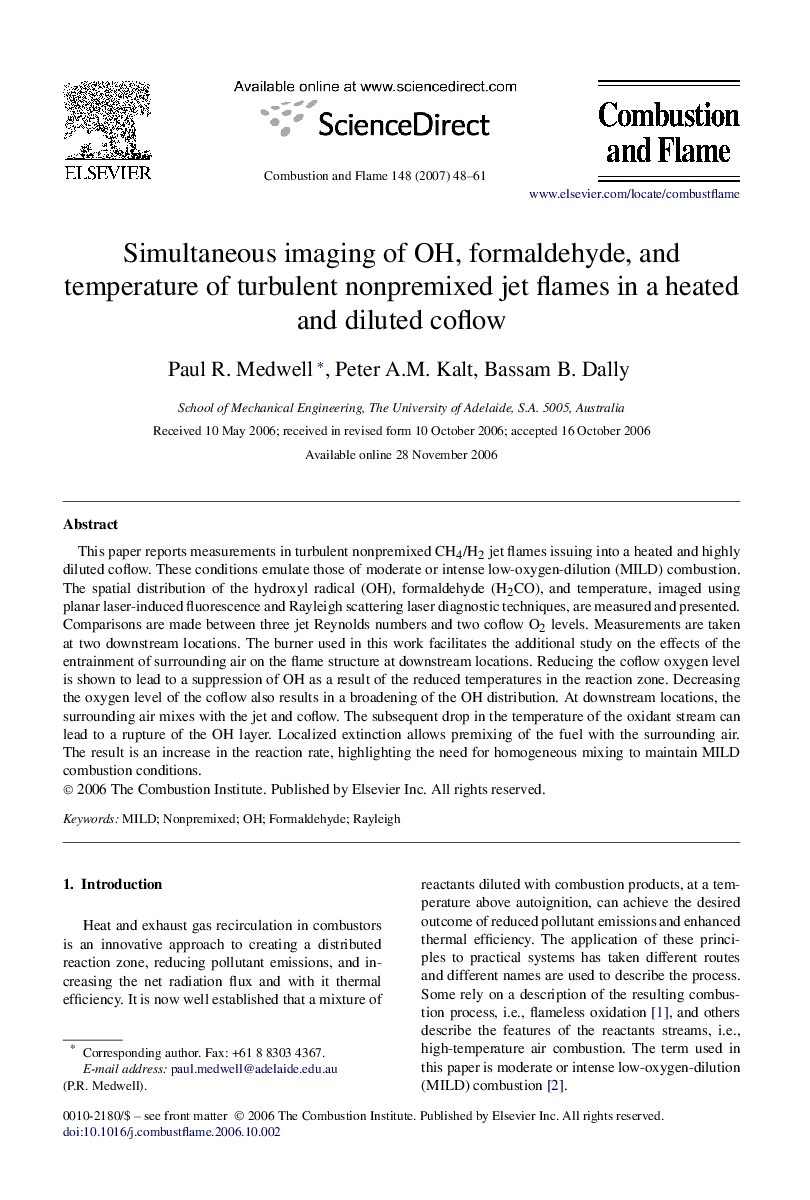| Article ID | Journal | Published Year | Pages | File Type |
|---|---|---|---|---|
| 169821 | Combustion and Flame | 2007 | 14 Pages |
This paper reports measurements in turbulent nonpremixed CH4/H2 jet flames issuing into a heated and highly diluted coflow. These conditions emulate those of moderate or intense low-oxygen-dilution (MILD) combustion. The spatial distribution of the hydroxyl radical (OH), formaldehyde (H2CO), and temperature, imaged using planar laser-induced fluorescence and Rayleigh scattering laser diagnostic techniques, are measured and presented. Comparisons are made between three jet Reynolds numbers and two coflow O2 levels. Measurements are taken at two downstream locations. The burner used in this work facilitates the additional study on the effects of the entrainment of surrounding air on the flame structure at downstream locations. Reducing the coflow oxygen level is shown to lead to a suppression of OH as a result of the reduced temperatures in the reaction zone. Decreasing the oxygen level of the coflow also results in a broadening of the OH distribution. At downstream locations, the surrounding air mixes with the jet and coflow. The subsequent drop in the temperature of the oxidant stream can lead to a rupture of the OH layer. Localized extinction allows premixing of the fuel with the surrounding air. The result is an increase in the reaction rate, highlighting the need for homogeneous mixing to maintain MILD combustion conditions.
